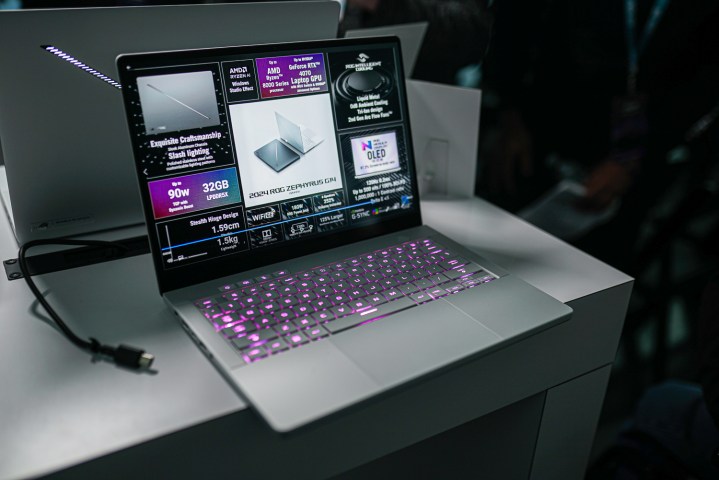
I’ve always liked the Asus ROG Zephyrus G14. It’s one of the best gaming laptops you can buy due to its portability and power, and especially its price. It has always played second fiddle to the Razer Blade 14, however, for those with the cash to burn for Razer’s high-end gaming laptop. That’s changing at CES 2024.
The 2024 Zephyrus G14 is a radical redesign that takes the fight directly to Razer. As someone who drives a Razer Blade 14 daily, I might be switching to the Zephyrus G14. A new aluminum chassis provides a premium finish while keeping the weight and thickness low, and Asus now has one of the best screens you can buy on a laptop.
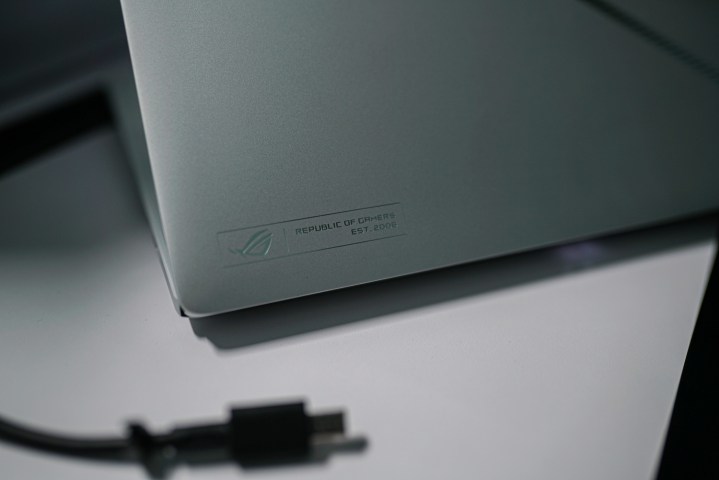
Let’s start with the shell because that’s the most radical departure for the 2024 Zephyrus G14. It’s all aluminum now, while previous versions of the Zephyrus G14 used a plastic shell that helped keep the price low. That could mean 2024’s model is more expensive — Asus hasn’t shared pricing details yet — but I’m here for it.
No one has really tried stepping on Razer’s turf for ultra-premium
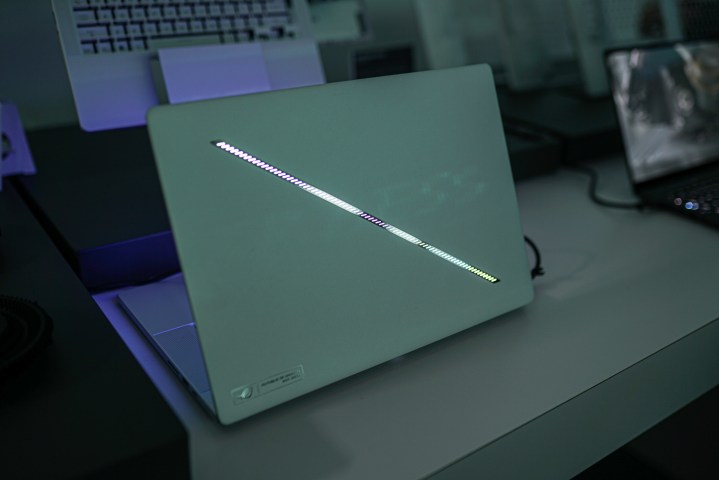
The feel is great on the 2024 Zephyrus G14, right up there next to the Blade 14. On the lid, Asus took the time to reimagine its AniMe Matrix. The matrix is gone, and in its place is a light strip that runs diagonally along the top lid. It has several LEDs that can light up as an audio visualizer and other effects, but it’s a bit pedestrian compared to the older matrix. It’s a step backward, but thankfully, I’m happy to leave the lights solid or off, as the design still looks stunning.
Opening up the laptop, you can get a spacious trackpad that, once again, is only rivaled by the Blade 14, and Asus’ excellent Zephyrus keyboard. I’m a fan of the Zephyrus keyboard. It comes with more travel than normal — 1.7mm on the 2024 model — that fits the way I slam on a keyboard when typing. The older Zephyrus G14 remains the only laptop I can comfortably type an article on while it’s sitting in my lap, and the 2024 carries that same excellence over.

This is a radical redesign, but it enhances the Zephyrus G14, not throw out what made it so great in the first place. You’re getting better portability, a large trackpad, and the same excellent keyboard. This is the Zephyrus G14, just better.
By far, however, the most exciting addition is OLED. The Zephyrus G14 has a jaw-dropping OLED display, fit with a full 120Hz refresh rate, Nvidia G-Sync, Dolby Vision, and a DisplayHDR True Black 500 certification. It’s also super high-res. It’s 3K with a 16:10 aspect ratio, which comes out to 2880 x 1800.
This is, without a doubt, the best laptop display I’ve seen so far. I suspect we’ll see more OLED
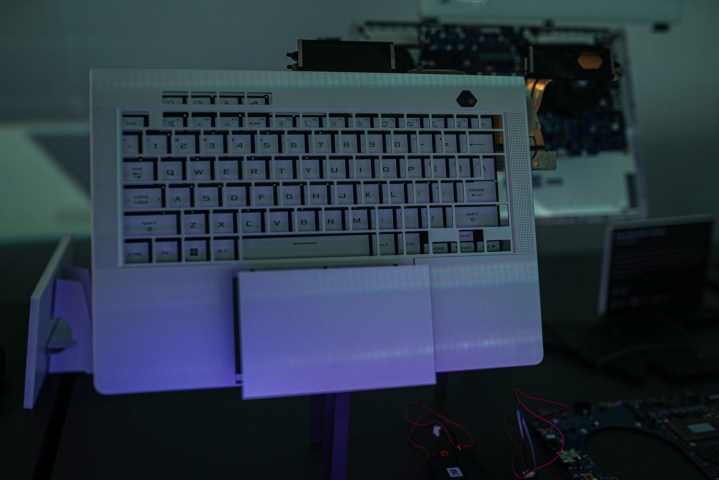
There are a few other upgrades elsewhere, including Wi-Fi 6E, USB-4 support, 100W of power delivery over USB-C, HDMI 2.1 FRL, and a six-speaker array that brings a lot more depth to the — admittedly lacking — audio on older Zephyrus models. Asus kept a lot of features from older designs, too, including a microSD card slot and Thermal Grizzly liquid metal on the CPU.
I’ve made it all of this way without talking specs, and that’s because there isn’t much new. You can configure the 2024 Zephyrus G14 with up to a Ryzen 9 8945HS — that’s just a rebrand of the Ryzen 9 7945HS in last year’s model — and up to an RTX 4070. Last year, Asus offered up to an RTX 4090, but I’m happy to see Asus ditch that flexibility for a more streamlined lineup. You really shouldn’t put more than an RTX 4070 in a design like this.
The big remaining question is price. The Razer Blade 14 is expensive, starting at $2,400, and I don’t imagine Asus will be able to hit the same low pricing of previous Zephyrus designs with the 2024 model. The important thing is how expensive it is compared to the Blade 14.
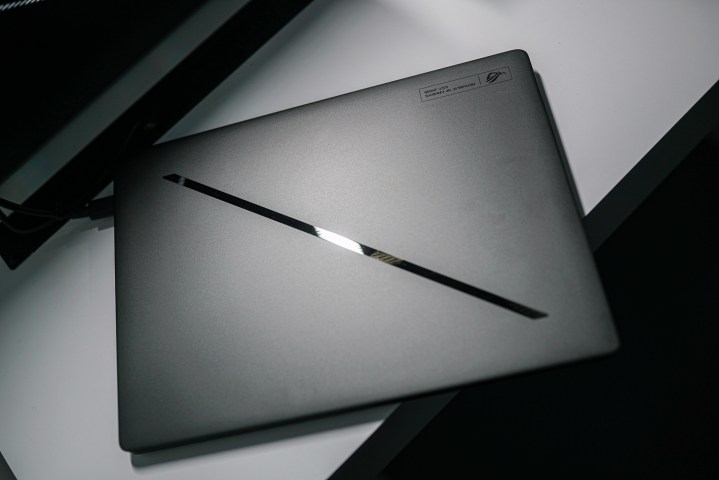
Very few brands have tried to take the fight to Razer, allowing Blades to sit in an unmatched, premium category. If Asus undercuts Razer’s offering even just a little, we will finally have some competition.
I’m not saying Asus will come out ahead in that fight. From my brief time with the laptop, it’s certainly a contender, but the Blade 14 is still an excellent laptop. If nothing else, the 2024 Zephyrus G14 stirs up some much-needed competition in the category of premium, portable
Editors' Recommendations
- Acer gets serious about 14-inch gaming laptops
- 2 gaming laptops you should buy instead of the Razer Blade
- We just learned two critical details about the 2024 Zephyrus G14
- I sat in Razer’s new gaming chair, and my back loved it
- The best gaming laptops we saw at CES 2024





